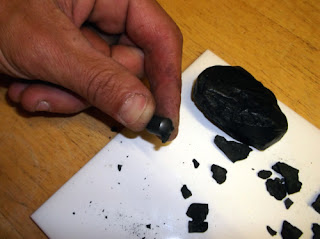1:50 000 scale superficial deposits description: Till, Devensian - Diamicton. Superficial Deposits formed up to 2 million years ago in the Quaternary Period. Local environment previously dominated by ice age conditions.
Setting: ice age conditions. These rocks were formed in cold periods with Ice Age glaciers scouring the landscape and depositing moraines of till with outwash sand and gravel deposits from seasonal and post glacial melt waters.
Above is the latest British geological survey explanation as to what is beneath us here in the south west area of Cleveland.
Setting: ice age conditions. These rocks were formed in cold periods with Ice Age glaciers scouring the landscape and depositing moraines of till with outwash sand and gravel deposits from seasonal and post glacial melt waters.
Above is the latest British geological survey explanation as to what is beneath us here in the south west area of Cleveland.






















 .8 - Excavated rock from the
.8 - Excavated rock from the 









